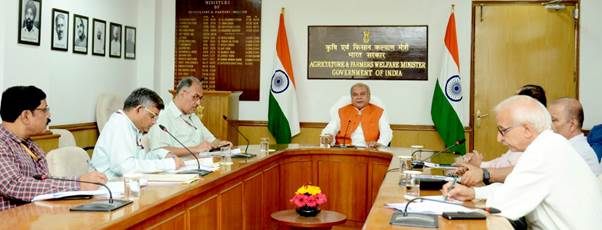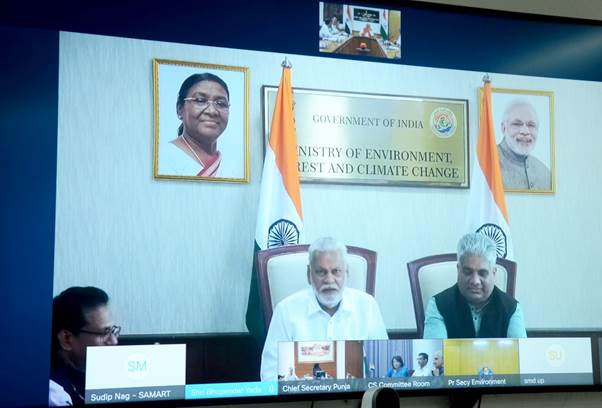The Union Inter-Ministerial Meeting with the States on the issues of Crop Residue Management was chaired by the Union Minister for Agriculture and Farmers Welfare, Shri Narendra Singh Tomar with the Union Minister for Environment, Forest and Climate Change, Shri Bhupendra Yadav and the Union Minister for Fisheries, Animal Husbandry and Dairying, Shri Parshottam Rupala in co-chair. The three ministers held intense discussions with the states to check the burning of stubble. Shri Tomar said that there is a need to fix the accountability of the collectors in the affected districts by the respective State Governments, while Shri Yadav said that the states should implement effective measures immediately. Shri Rupala stressed on proactive steps, especially for the problem of stubble burning in Punjab.

In the high-level review meeting, senior officials of Punjab, Haryana, Uttar Pradesh and Delhi state government and top officials of all the three central ministries as well as the Indian Council of Agricultural Research, Central Pollution Control Board, Commission for Air Quality Management in National Capital Region and Adjoining Areas, Ministry of Power and senior officials of other central ministries and departments participated. It was informed in the meeting that the states need to ensure effective utilization of 2.07 lakh machines already supplied by the Center during the last 4 years and 47,000 machines being provided during the current year. Under the Central Scheme on Crop Residue Management, the Government is already providing financial assistance to Punjab, Haryana, U.P. and NCT Delhi to combat air pollution in Delhi NCR due to stubble burning. Rs. 601.53 crore has already been released by the Center during the current year so far. Also, out of the amount given in the last four years, about Rs 900 crore is available with the states. The need for effective utilization of funds provided by the Government of India to the states for stubble management was emphasized in the meeting.
Shri Tomar said that the states should promote widespread use of bio-decomposer developed by the Pusa Institute for effective in-situ decomposition of stubble. He said that the Central Government has tried its best to fulfil the expectations of states. If the state governments also work diligently in the same way, it will bring good results. Especially, if effective checking is done on stubble burning in Amritsar and Tarn Taran districts of Punjab, then half the job will be done, because these two districts are facing the maximum problem. Effective control in these four states will also help contain the problem from spreading to other states. If we work with holistic efforts in a planned manner, the availability of fodder for cattle will also be easy. Shri Tomar said that a workshop is being organized in Pusa, Delhi on 4th November, in which farmers from Punjab and adjoining areas have been called for this purpose, senior officers of Punjab should also participate in this workshop so that their doubts regarding the Pusa decomposer are cleared. Shri Tomar said that Pusa decomposer is the cheapest and most effective solution for Crop Residue Management, which needs to be promoted.

Environment Minister Shri Yadav said that more than two lakh machines given by the Center are sufficient, it is necessary that they should be fully utilized for addressing the problem. Other contributing factors of pollution have also been considered by the Center. Emphasizing on effective control to prevent stubble burning, especially in Punjab, Shri Yadav called upon the state’s Chief Secretary to take immediate and appropriate action as well as to promote the use of Pusa decomposer.
During the meeting, explaining the need to implement appropriate IEC activities for the targeted farmers, the states have been advised to make a strategic plan by deploying all the necessary resources and deal with the situation. Considering the benefits of bio decomposer, states have been advised to demonstrate this technology in farmers' fields on a large scale. During the current year, a target has been set to bring more than 8.15 lakh hectares of land in the states under the ambit of this technology. To promote and disseminate the ex-situ use of stubble by mapping the demand of stubble from biomass-based power plants, bioethanol plants and nearby industries as well as to reach out to all the stakeholders through Kisan Melas, publications, seminars, consultations, it has been urged to undertake IEC activities for awareness among farmers through intensive campaigns with their participation. This will effectively control stubble burning.
*****



0 Comments